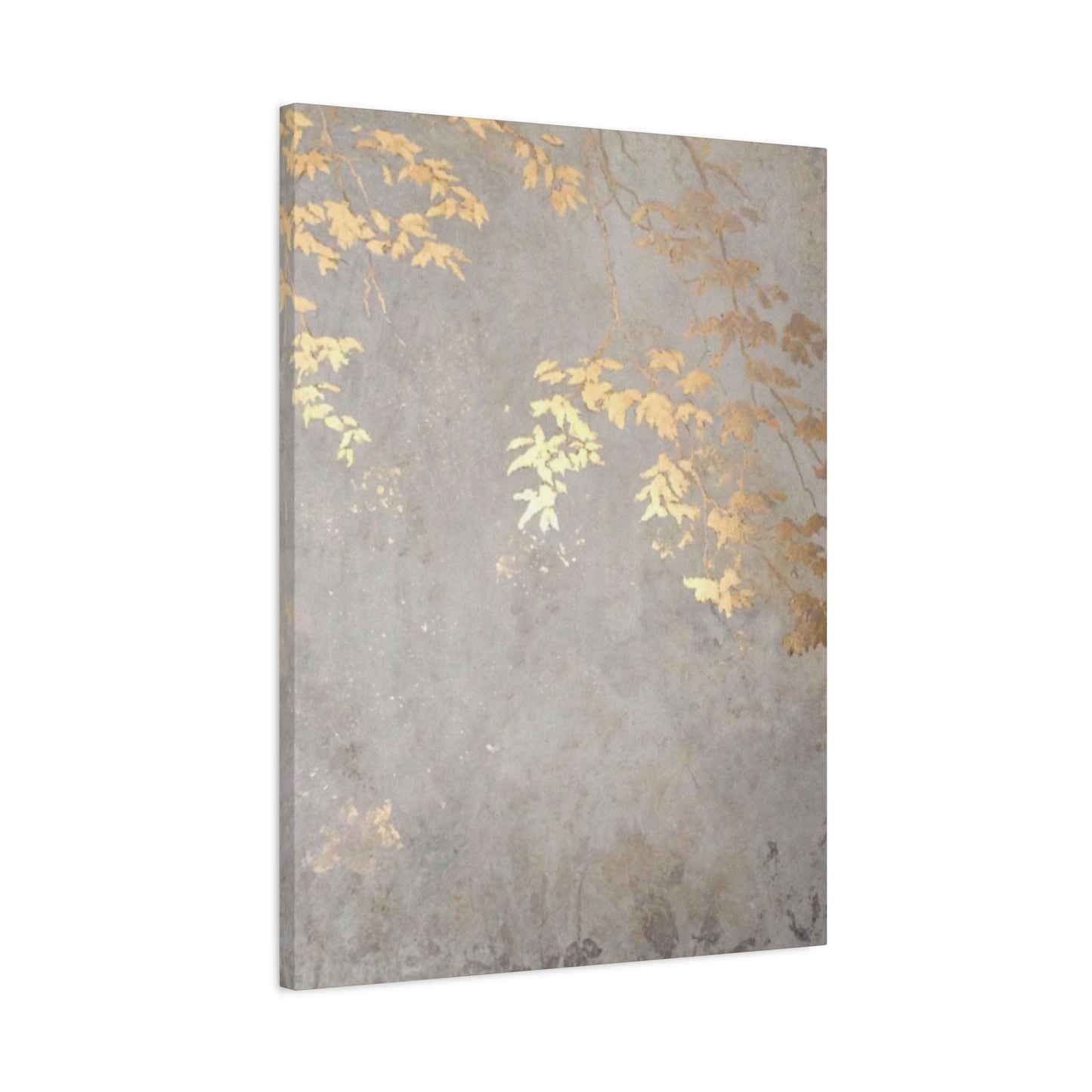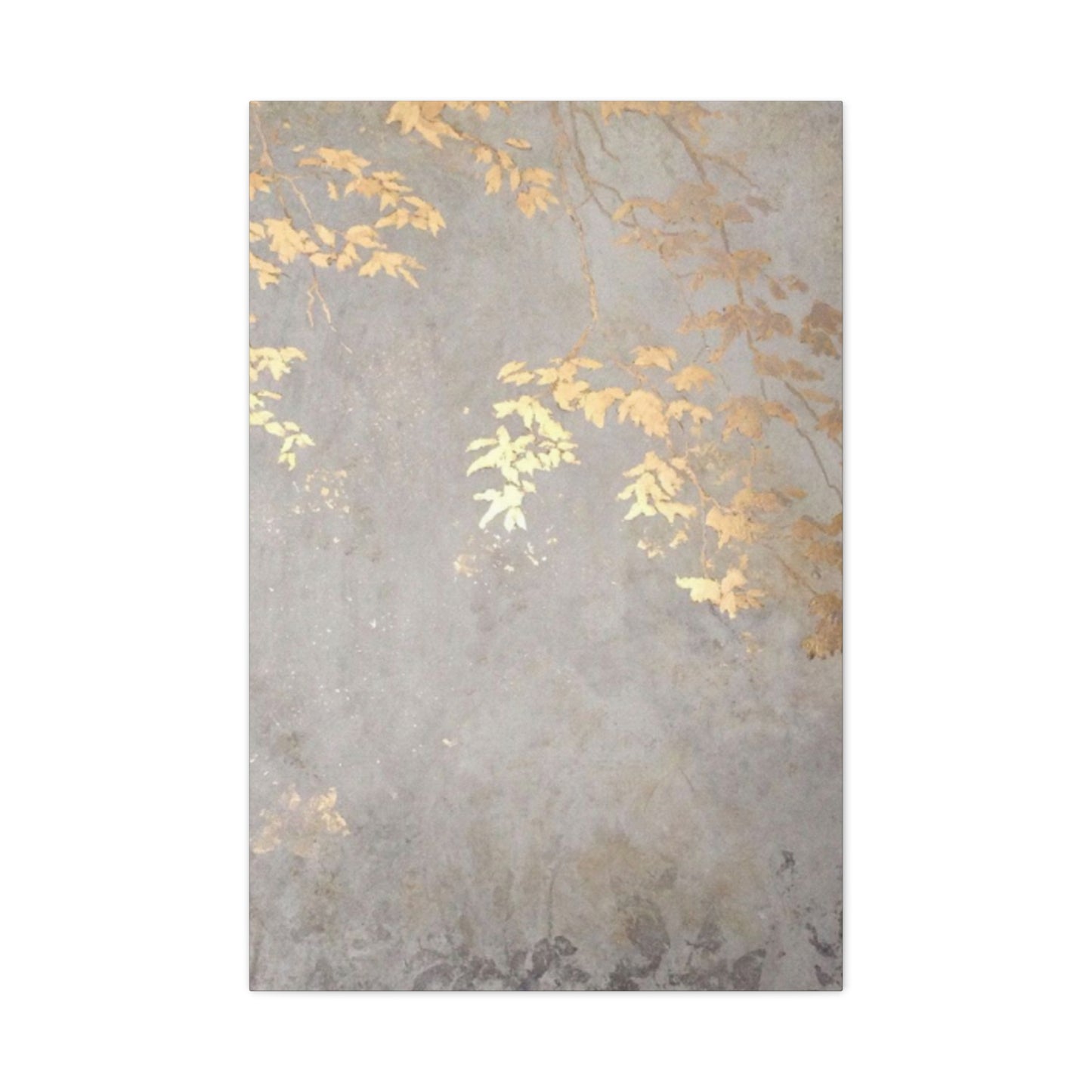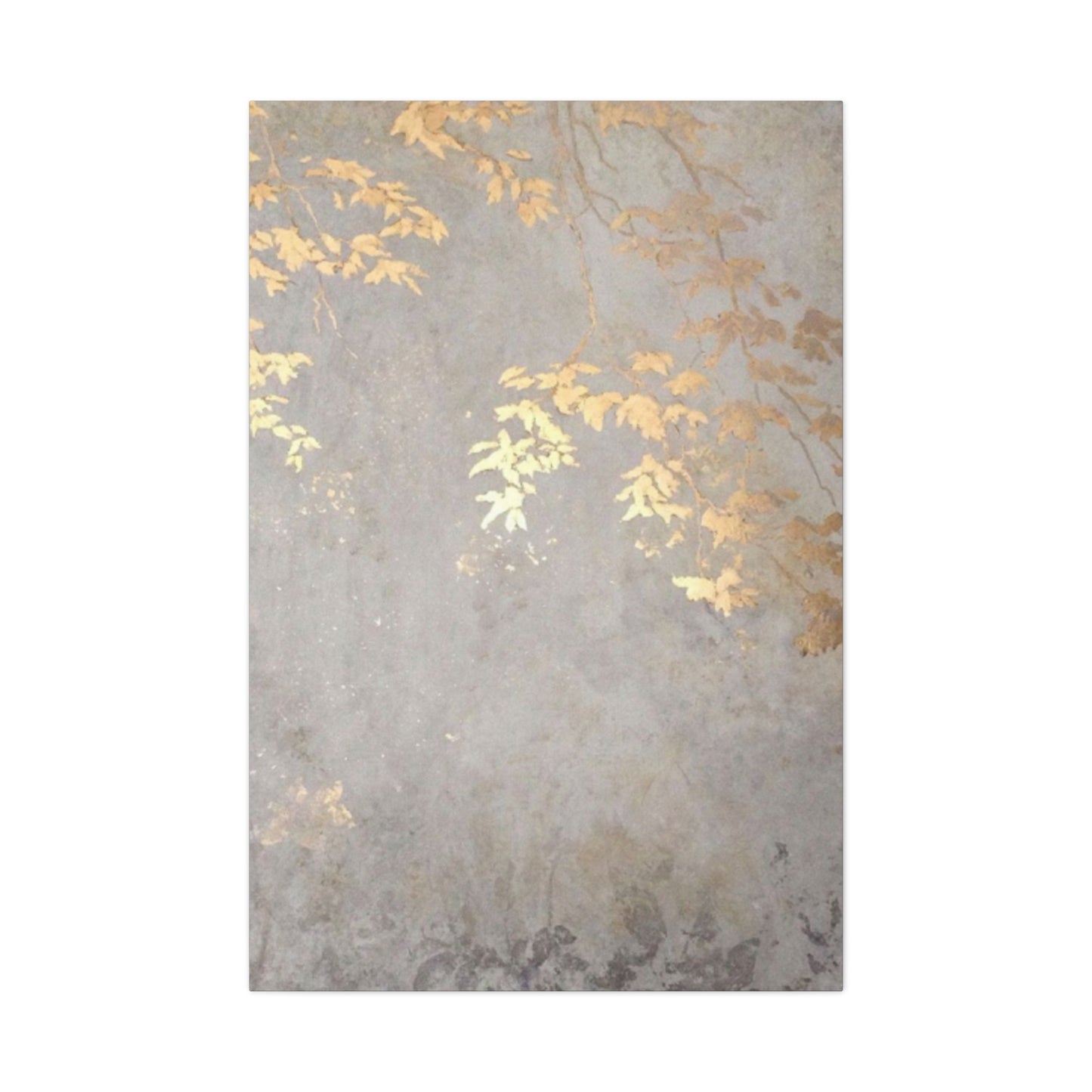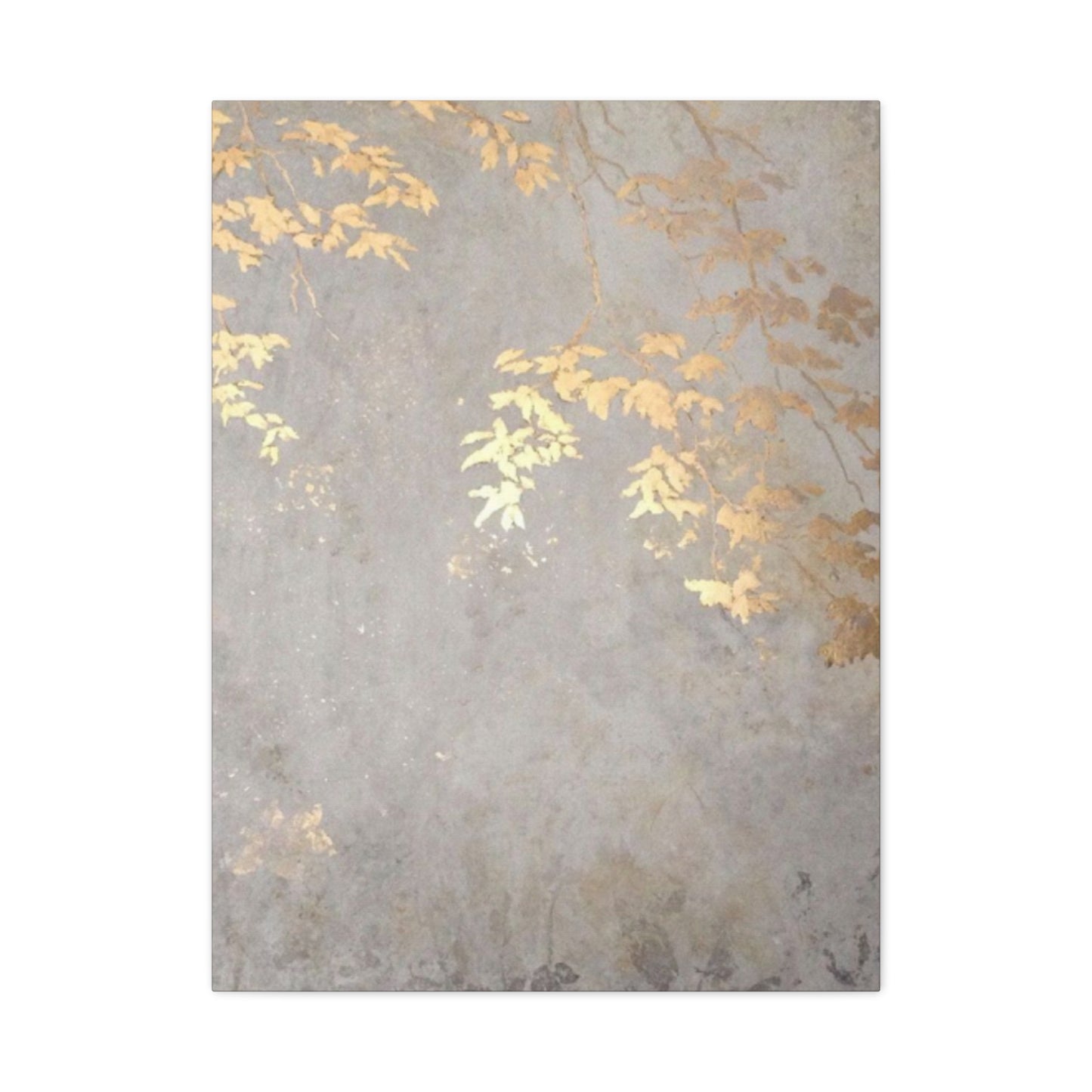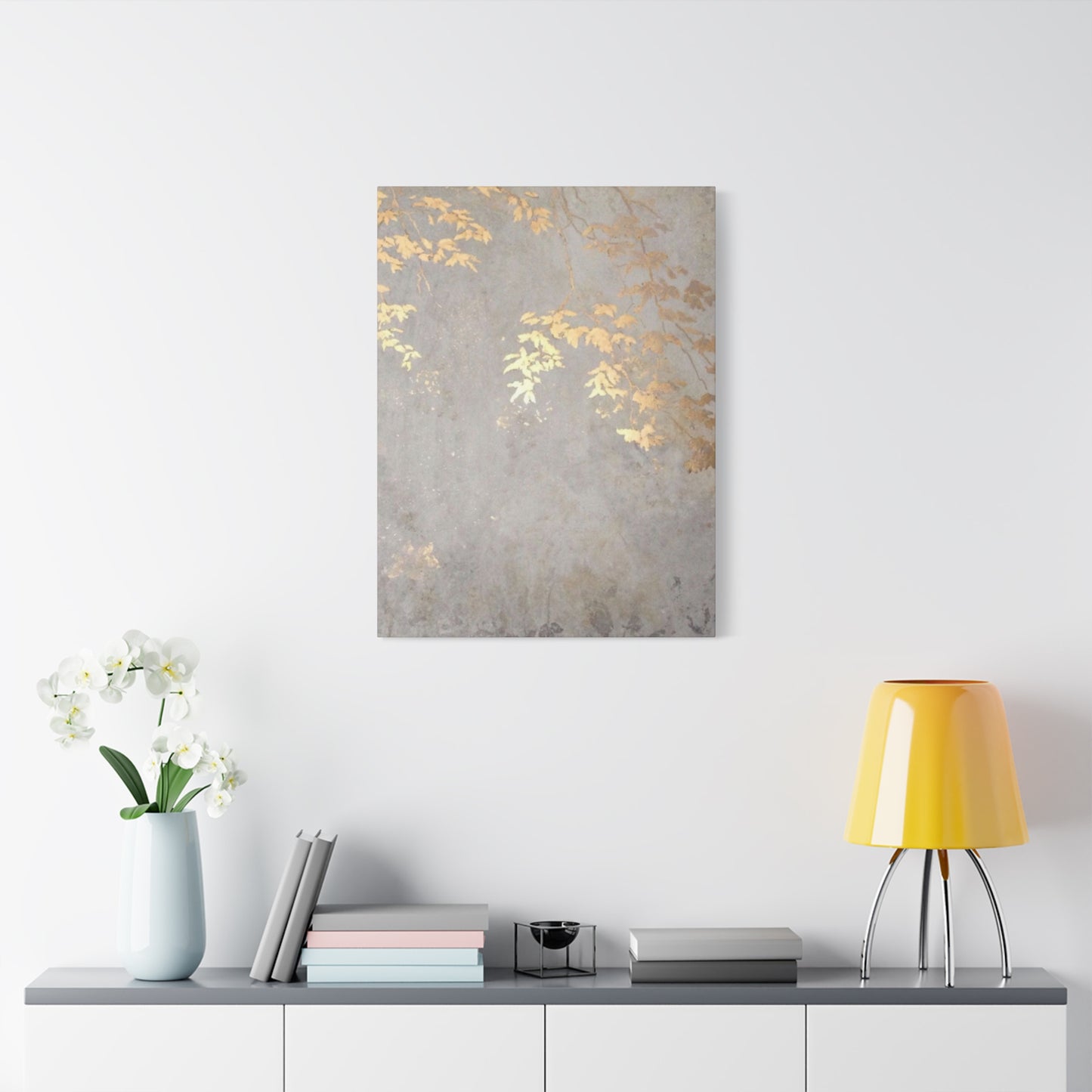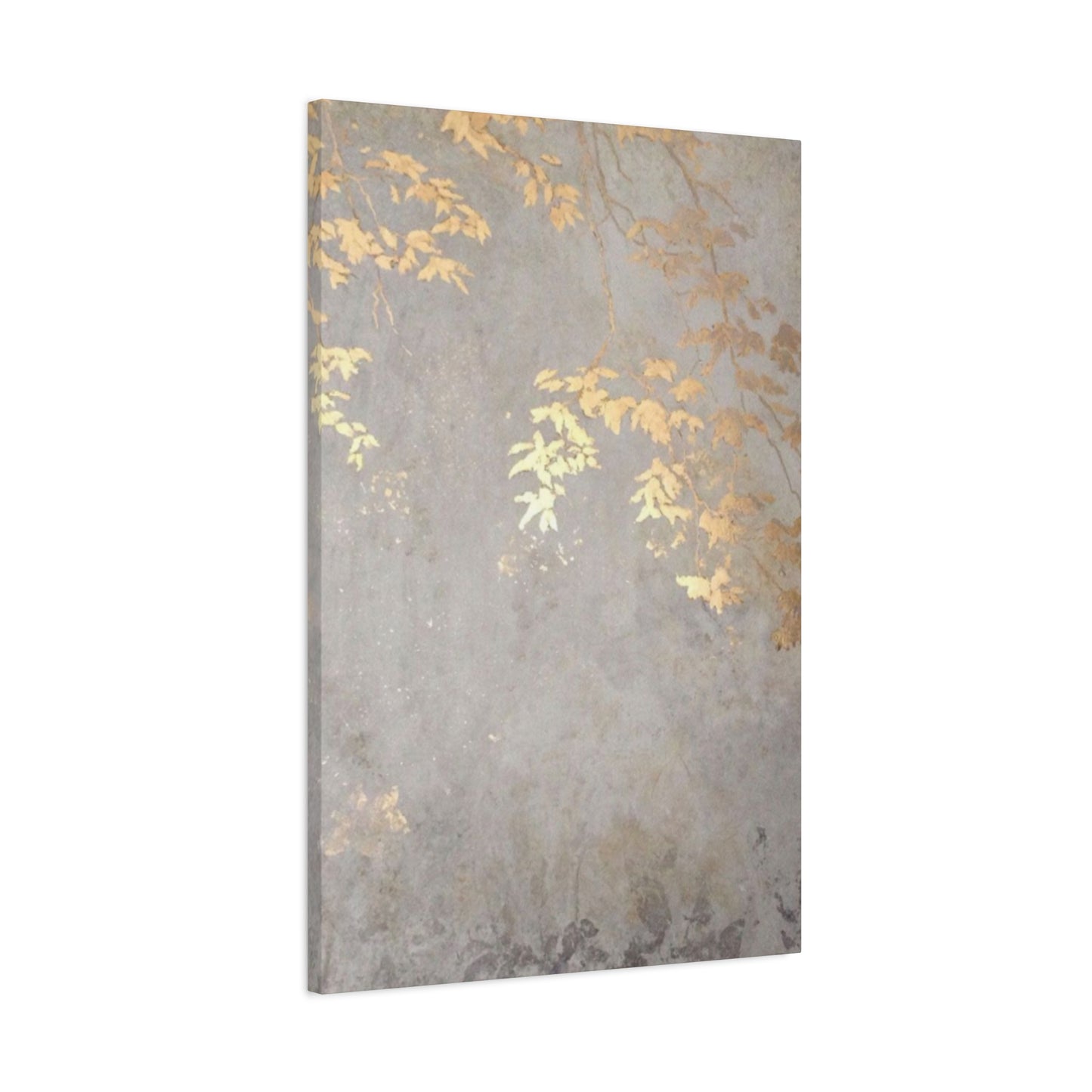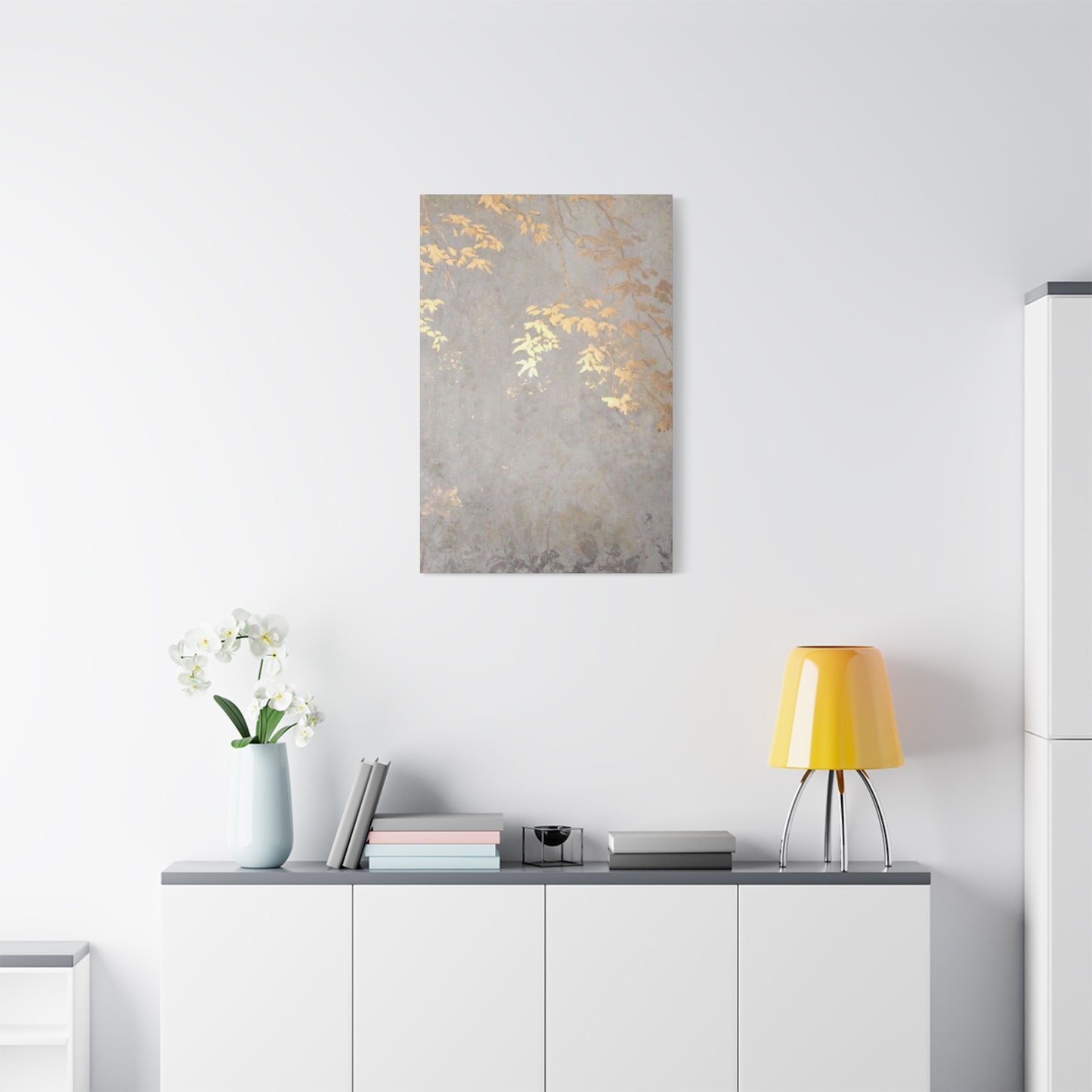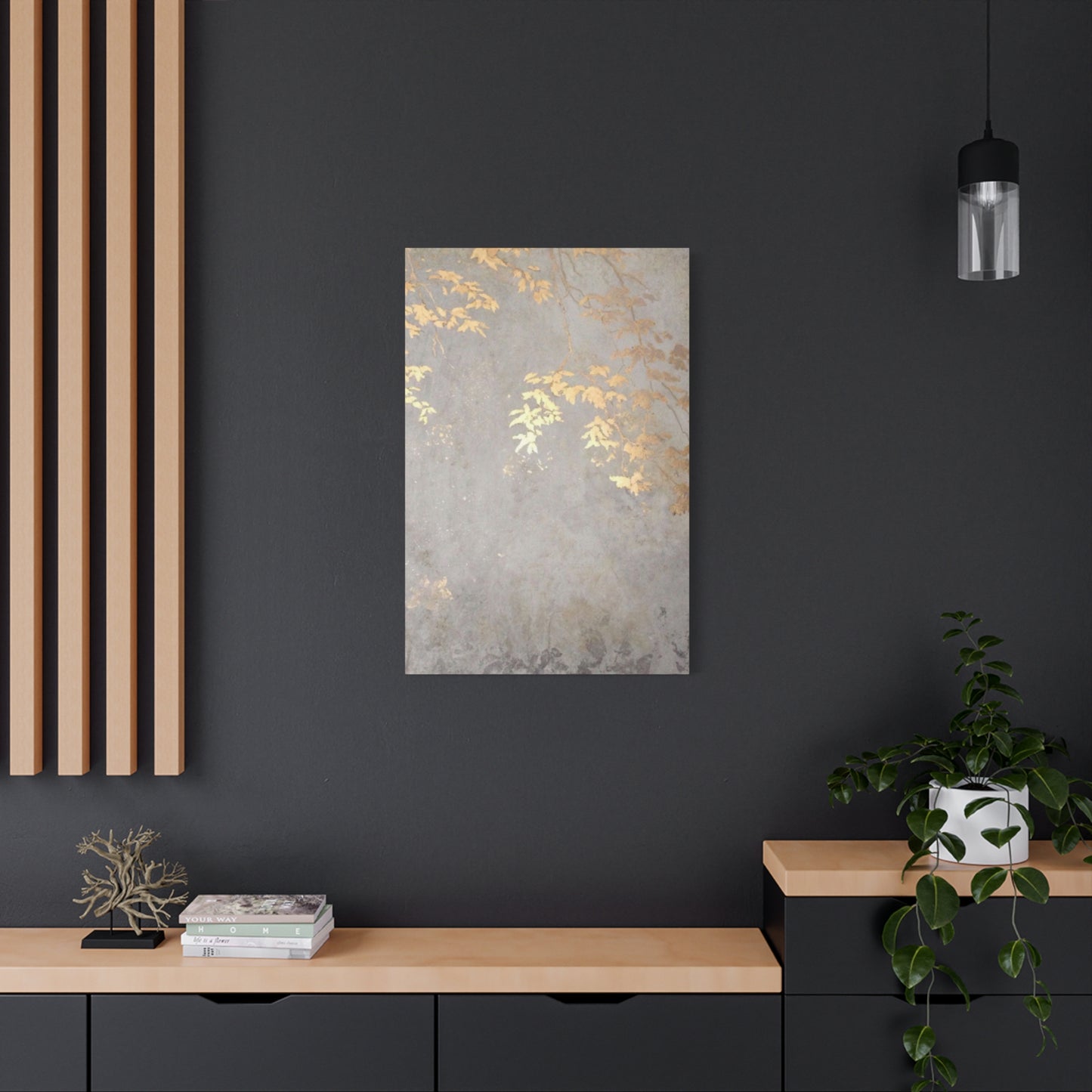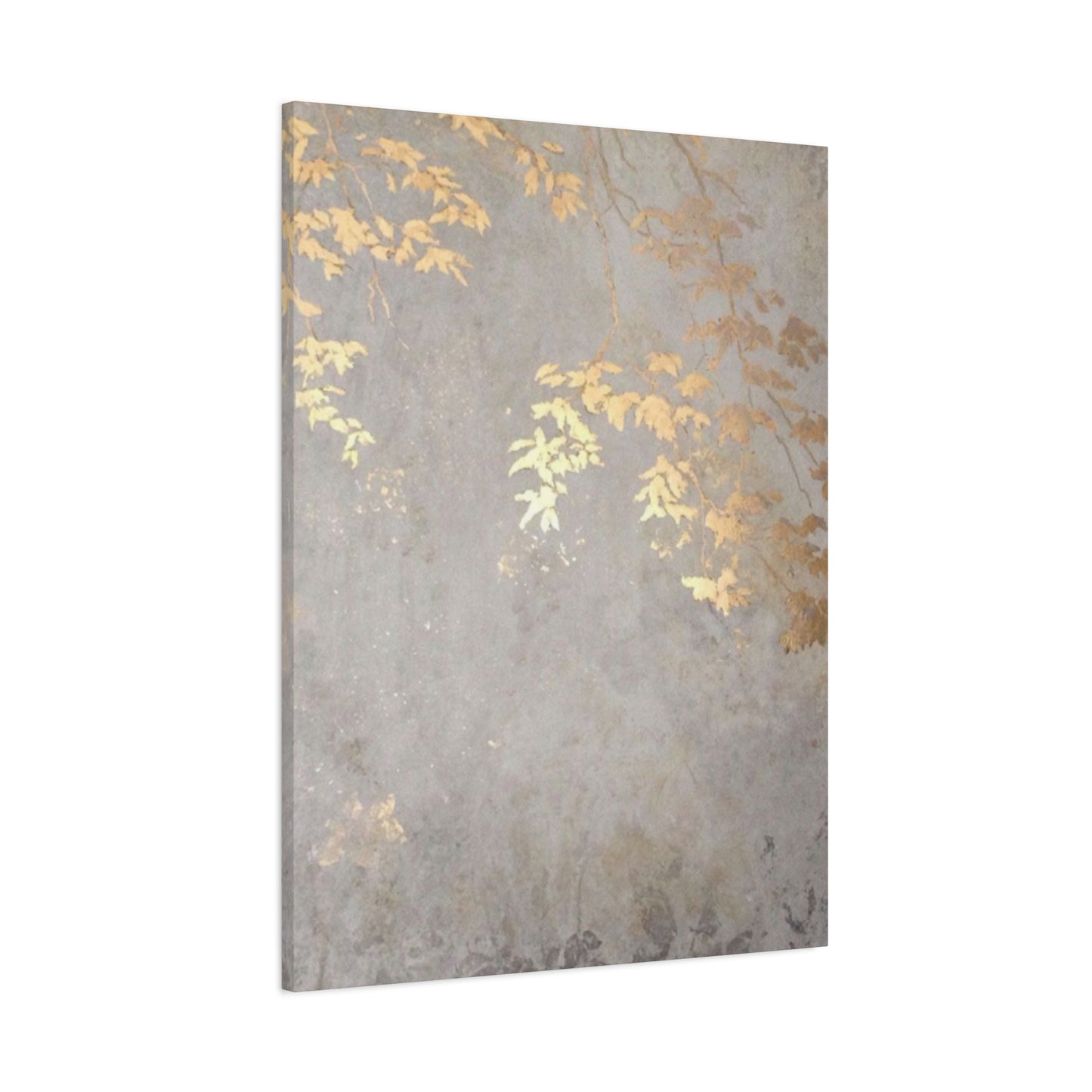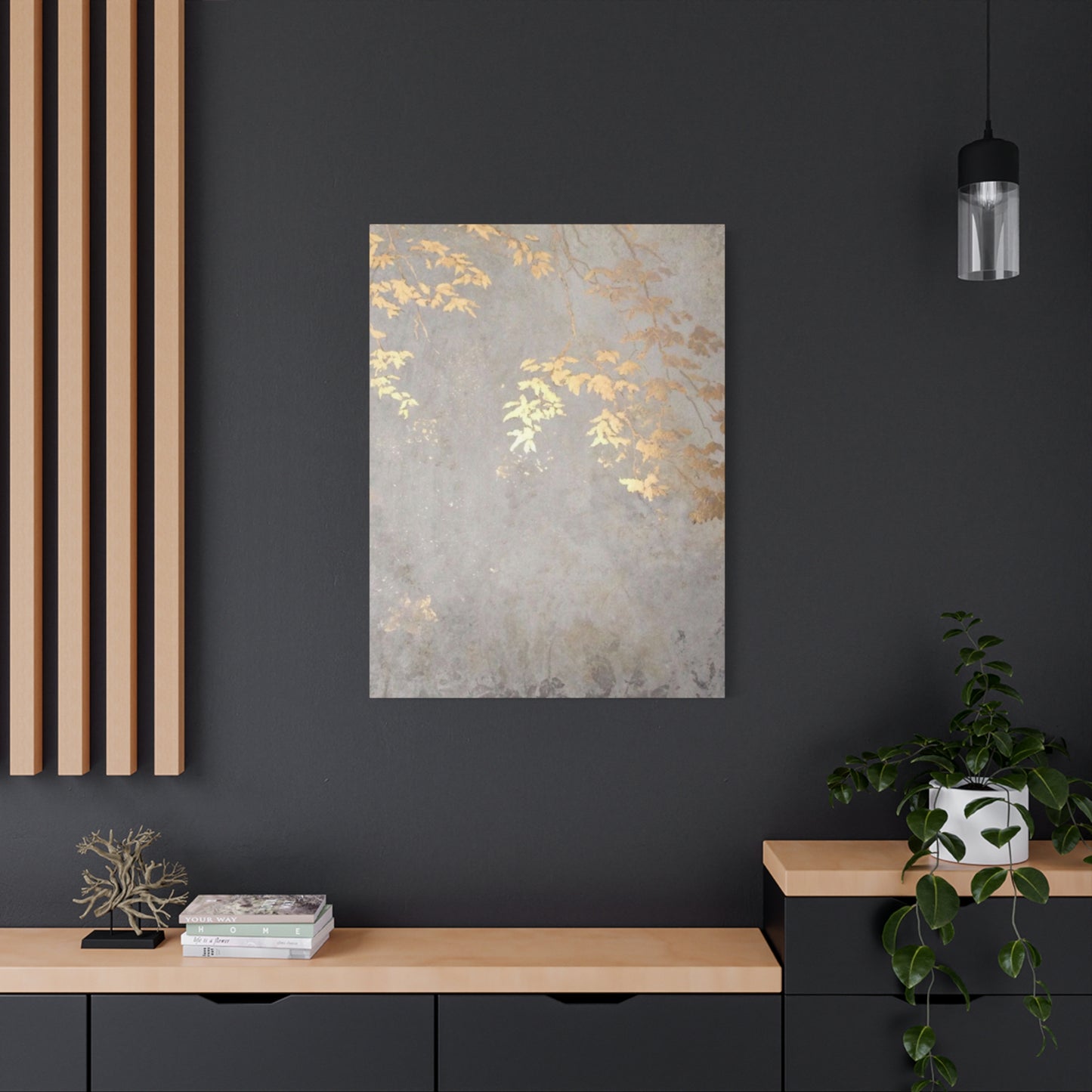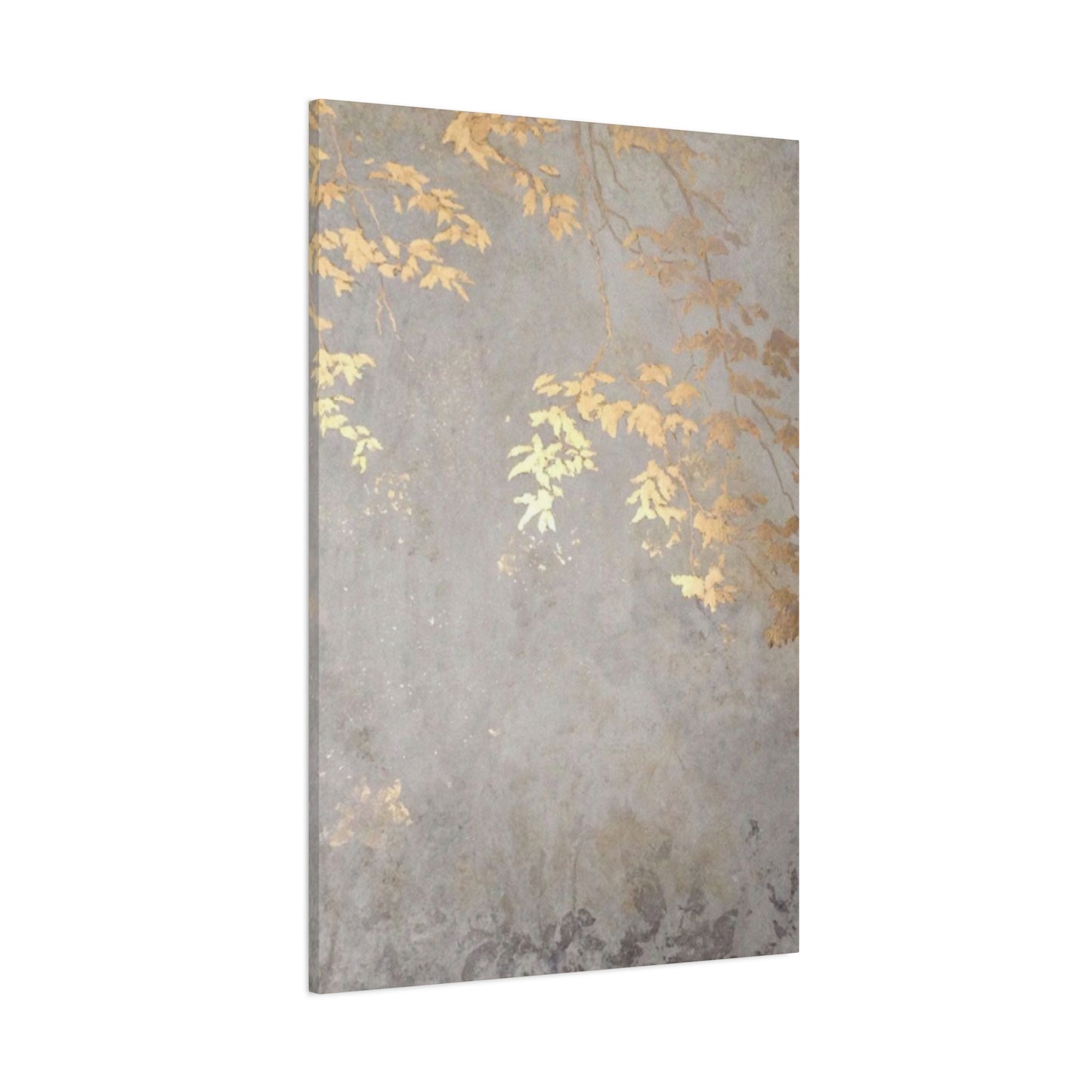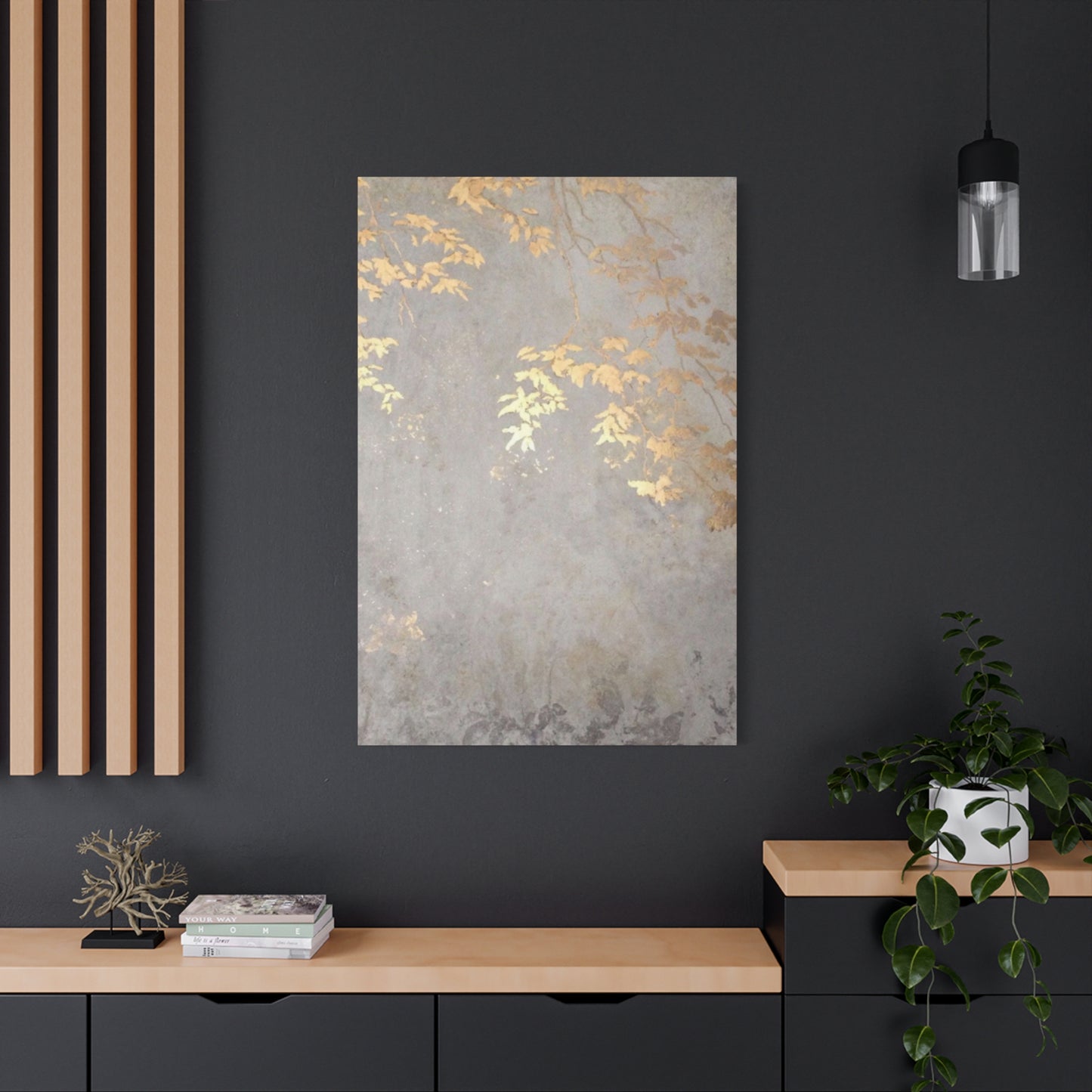Blending Surface Textures Through Metallic Elements in Golden Abstract Wall Art
Creating visual depth through texture combination represents one of the most sophisticated approaches to enhancing your living environment. When incorporating metallic elements into abstract artwork, the interplay between different surface qualities creates a dynamic visual experience that captivates viewers from multiple angles. The combination of smooth metallic surfaces with rougher textural elements produces a tactile quality that invites closer inspection while maintaining aesthetic appeal from a distance.
Metallic textures in abstract artwork serve multiple purposes beyond mere decoration. They reflect ambient lighting throughout the day, creating an ever-changing display that responds to natural light cycles and artificial illumination. This responsive quality makes golden abstract pieces particularly valuable as focal points, as they literally bring life to static wall surfaces through their reflective properties.
The contrast between matte and glossy finishes within a single piece creates visual tension that draws the eye and maintains interest. Artists often employ techniques such as layering metallic paints over textured backgrounds, creating depth that appears to shift depending on viewing angle. This dimensional quality transforms flat wall surfaces into dynamic focal points that enhance the overall atmosphere of any room.
When selecting pieces that feature mixed textures, consider how different metallic finishes will interact with existing architectural elements. Brushed gold surfaces complement contemporary fixtures, while hammered or patinated metallic textures align beautifully with more traditional or rustic design elements. The key lies in understanding how these textural contrasts will enhance rather than compete with surrounding furnishings and architectural features.
Professional artists frequently combine traditional painting techniques with modern metallic applications, creating pieces that bridge classical and contemporary aesthetics. These hybrid approaches result in artwork that appeals to diverse tastes while maintaining cohesive visual impact. The textural complexity achieved through these mixed-media approaches provides lasting visual interest that prevents the artwork from becoming merely decorative background elements.
Illumination Techniques That Accentuate Golden Elements in Artistic Compositions
Proper lighting serves as the catalyst that transforms golden abstract artwork from simple decoration into stunning focal points. Understanding how different lighting approaches interact with metallic surfaces enables homeowners to maximize the visual impact of their artistic investments while creating ambiance that enhances daily living experiences.
Natural lighting throughout the day creates constantly shifting displays as golden elements respond to changing sun angles and cloud cover. Morning light tends to emphasize warmer tones within golden abstracts, while afternoon illumination brings out cooler metallic undertones. Evening light creates dramatic shadows and highlights that reveal previously unnoticed details within the artistic composition.
Artificial lighting options provide controlled enhancement opportunities that remain consistent regardless of weather conditions or time of day. Track lighting positioned at carefully calculated angles can create dramatic highlighting effects that emphasize specific elements within golden abstract pieces. The key lies in avoiding direct illumination that creates harsh reflections, instead opting for angled lighting that grazes metallic surfaces to reveal their textural qualities.
LED strip lighting installed behind artwork creates subtle backlighting effects that make golden elements appear to glow from within. This technique works particularly well with pieces that feature translucent or semi-transparent metallic elements, creating depth and dimensionality that transforms wall-mounted artwork into architectural features.
Accent lighting through strategically placed table lamps or floor fixtures can create complementary illumination that enhances golden artwork without overwhelming it. The goal involves creating layered lighting schemes where artwork enhancement integrates seamlessly with overall room illumination, resulting in cohesive environments that feel professionally designed.
Consider the color temperature of artificial lighting when planning illumination schemes for golden abstract pieces. Warmer light temperatures enhance the richness of golden tones, while cooler temperatures can create interesting contrast effects that highlight the interplay between metallic and non-metallic elements within the artwork.
Professional Framing Strategies for Golden Abstract Compositions
Selecting appropriate framing for golden abstract artwork requires careful consideration of how frame materials and finishes will interact with metallic artistic elements. The frame serves as both protective boundary and aesthetic extension of the artwork itself, making thoughtful frame selection crucial for achieving professional presentation quality.
Metallic frame finishes can either complement or contrast with golden artwork elements, depending on the desired visual effect. Matching golden frames create seamless integration that allows the artwork to flow naturally into its surrounding environment, while contrasting metallic finishes such as silver or copper can create dynamic tension that emphasizes the artwork's metallic elements through comparison.
Frame width plays a significant role in determining how golden abstract pieces integrate with their surroundings. Wider frames create substantial presence that works well with larger pieces or when artwork serves as primary focal points. Narrower frames allow greater emphasis on the artwork itself while providing necessary boundary definition between the piece and surrounding wall surfaces.
Matting decisions significantly impact how golden elements appear within their frames. Neutral matting colors allow metallic elements to take center stage, while colored mats can either enhance or subdue golden tones depending on color relationships. Textured mat surfaces can echo textural elements within the artwork, creating cohesive presentation that feels professionally curated.
Glass selection influences how lighting interacts with both artwork and frame. Anti-reflective glass minimizes unwanted reflections that can obscure golden details, while standard glass may create interesting reflection effects that enhance the overall presentation. UV-protective glass ensures long-term preservation of metallic finishes and underlying artistic materials.
Custom framing options allow for specialized presentation techniques such as float mounting, which creates the appearance of artwork suspended within the frame. This approach works particularly well with golden abstract pieces that feature irregular edges or dimensional elements that extend beyond traditional rectangular boundaries.
Creating Dramatic Focal Points with Golden Abstract Artwork
Developing statement walls through strategic placement of golden abstract pieces requires understanding how these artworks interact with architectural elements and surrounding furnishings. The goal involves creating visually compelling focal points that enhance rather than overwhelm existing design elements while establishing clear visual hierarchy within the room.
Scale consideration forms the foundation of effective statement wall creation. Large-scale golden abstract pieces can anchor entire wall surfaces, creating dramatic backdrops for seating areas or dining arrangements. The metallic elements within these pieces reflect ambient lighting throughout the day, ensuring that the focal point remains visually engaging regardless of lighting conditions.
Grouping multiple smaller pieces can create equally impactful statement walls while offering greater flexibility in arrangement and future reconfiguration. The key lies in maintaining consistent visual themes while allowing individual pieces to contribute unique elements to the overall composition. Golden abstract pieces work particularly well in grouped arrangements because their metallic elements create visual connections between separate artworks.
Positioning statement walls requires consideration of viewing angles and traffic patterns throughout the room. Optimal placement ensures that golden abstract pieces remain visible from primary seating areas while avoiding positions where reflective elements might create unwanted glare. The goal involves maximizing visual impact while maintaining comfortable viewing conditions for daily use.
Background wall color significantly influences how golden abstract statement pieces appear within their environments. Darker backgrounds tend to emphasize metallic elements and create dramatic contrast effects, while lighter backgrounds allow subtle metallic details to emerge gradually as lighting conditions change throughout the day. Neutral backgrounds provide versatile foundations that accommodate future design changes without requiring artwork replacement.
Consider the relationship between statement wall artwork and surrounding architectural features such as fireplaces, built-in shelving, or window installations. Golden abstract pieces can either complement these elements by echoing their proportions or create dynamic contrast through opposing scales and orientations.
Handmade Golden Abstract Canvas Creation Techniques
Developing personal artistic skills through golden abstract canvas creation provides both creative satisfaction and customized artwork that perfectly matches individual aesthetic preferences. Understanding fundamental techniques enables beginners to create sophisticated-looking pieces while allowing experienced artists to explore new creative territories.
Surface preparation forms the foundation of successful golden abstract canvas work. Properly primed canvases accept metallic paints more evenly and provide better long-term adhesion for various artistic materials. Gesso application should be smooth and even, providing a neutral base that won't interfere with metallic color accuracy or reflective properties.
Metallic paint selection significantly impacts final results, with different formulations offering varying levels of opacity, texture, and reflective quality. Acrylic-based metallic paints provide good coverage and durability for beginners, while specialty metallic mediums offer professional-grade results with superior lightfastness and archival quality. Understanding how different metallic paints behave when mixed or layered prevents disappointing results and wasted materials.
Brush selection influences texture and application quality in golden abstract work. Synthetic brushes work well with metallic paints and clean easily, while natural bristle brushes can create interesting textural effects through their irregular application patterns. Palette knives offer additional texture creation possibilities while allowing broad color application that's difficult to achieve with traditional brushes.
Layering techniques create depth and visual complexity that distinguish professional-looking results from amateur attempts. Starting with darker base colors and gradually building up lighter metallic tones creates natural-looking depth effects. Allowing each layer to dry completely prevents muddy color mixing while maintaining clear distinction between different metallic elements.
Abstract composition development requires balancing planned elements with spontaneous creative decisions. Successful golden abstract pieces often combine deliberate focal points with areas of unexpected detail that reward closer inspection. The goal involves creating compositions that remain visually interesting across multiple viewing sessions while maintaining overall coherence.
Finishing techniques protect completed artwork while enhancing metallic elements' longevity and appearance. Appropriate varnish selection preserves metallic finishes without dulling their reflective properties, ensuring that handmade pieces maintain their visual impact over time.
Harmonizing Gold Abstract Artwork with Neutral Furnishing Palettes
Creating cohesive room designs that incorporate golden abstract artwork alongside neutral furnishings requires understanding how metallic elements interact with various neutral tones and textures. The goal involves achieving visual harmony that allows both artwork and furnishings to contribute to overall aesthetic success without competing for attention.
Neutral palette selection influences how golden artwork elements appear within their environments. Warm neutrals such as cream, beige, and soft gray create supportive backgrounds that enhance golden tones without overwhelming them. Cool neutrals including dove gray, white, and soft blue can create interesting contrast effects that make metallic elements appear more vibrant through comparison.
Furniture material selection affects how golden abstract pieces integrate with neutral furnishing schemes. Natural materials such as wood, stone, and linen create organic backdrops that complement the handcrafted qualities often found in abstract artwork. These materials provide textural contrast that prevents neutral schemes from appearing bland while supporting rather than competing with artistic focal points.
Color temperature consistency throughout neutral schemes ensures that golden abstract pieces appear properly integrated rather than artificially inserted. Matching warm or cool undertones between furnishings and artwork creates subtle connections that tie design elements together visually. This coordination prevents golden pieces from appearing isolated or disconnected from their surroundings.
Pattern integration within neutral schemes requires careful balance to prevent visual chaos while maintaining interest. Golden abstract artwork often provides sufficient visual complexity to serve as primary pattern elements, allowing furnishings to remain relatively simple without creating boring environments. The key lies in ensuring that any additional patterns complement rather than compete with abstract artistic elements.
Accent color introduction through accessories and textiles can create visual bridges between golden artwork and neutral furnishings. Warm accent colors such as deep burgundy, forest green, or navy blue can echo undertones within golden abstract pieces while adding depth to neutral schemes. These accent colors should appear in multiple locations throughout the room to create visual balance and prevent isolated color placement.
Lighting coordination ensures that both artwork and furnishings receive appropriate illumination that enhances their individual qualities while contributing to overall room ambiance. The goal involves creating layered lighting schemes where golden abstract pieces receive adequate highlighting without casting unflattering shadows on surrounding neutral furnishings.
Comparing Geometric Precision with Organic Flow in Golden Design Approaches
Understanding the fundamental differences between geometric and freeform approaches in golden abstract artwork enables more informed selection decisions while providing insight into how different artistic styles will function within various decorative contexts. Each approach offers distinct advantages that appeal to different aesthetic sensibilities and room design requirements.
Geometric golden abstract designs emphasize mathematical precision, clean lines, and systematic color placement that creates order and visual stability. These pieces often feature repeating patterns, symmetrical compositions, and carefully calculated proportions that appeal to viewers who appreciate structured environments. The metallic elements in geometric pieces typically follow predictable patterns that create rhythmic visual effects throughout the composition.
Sharp angular elements in geometric golden abstracts can complement contemporary architectural features while providing visual contrast to organic furnishing elements such as plants or curved furniture pieces. The precision inherent in geometric designs makes them particularly suitable for modern environments where clean lines and systematic organization form primary design principles.
Freeform golden abstract designs emphasize spontaneous creative expression, organic flowing lines, and intuitive color placement that creates movement and emotional resonance. These pieces often feature irregular shapes, asymmetrical compositions, and unexpected metallic placement that appeals to viewers who appreciate more relaxed and emotionally expressive environments. The metallic elements in freeform pieces typically follow natural flow patterns that create dynamic visual movement throughout the composition.
Curved and flowing elements in freeform golden abstracts can soften rigid architectural features while harmonizing naturally with organic furnishing elements and natural materials. The spontaneity inherent in freeform designs makes them particularly suitable for traditional or eclectic environments where comfort and personal expression take precedence over systematic organization.
Hybrid approaches that combine geometric and freeform elements offer versatile solutions that can adapt to various decorative contexts while providing visual interest through stylistic contrast. These pieces often feature geometric frameworks filled with organic details or freeform compositions organized through geometric boundaries, creating sophisticated results that appeal to diverse aesthetic preferences.
The scale of geometric versus freeform elements affects how each approach functions within different room sizes and viewing distances. Large geometric elements remain clearly defined from substantial viewing distances, while intricate freeform details require closer inspection to fully appreciate their complexity and emotional impact.
Essential Evaluation criteria for Golden Abstract Artwork Purchases
Developing systematic evaluation approaches for golden abstract artwork ensures informed purchasing decisions that result in long-term satisfaction and appropriate aesthetic integration. Understanding key quality indicators prevents costly mistakes while helping identify pieces that will maintain their visual impact and monetary value over time.
Artistic technique assessment begins with examining how metallic elements are applied and integrated within the overall composition. High-quality pieces demonstrate consistent metallic application without obvious brush marks, drips, or uneven coverage that indicates rushed or amateur execution. Professional artists typically achieve smooth metallic transitions and purposeful textural variations that enhance rather than detract from overall composition quality.
Material quality evaluation involves understanding the difference between various metallic paint formulations and their long-term durability characteristics. Genuine metal leaf applications offer superior longevity and authentic appearance compared to metallic paints, though quality metallic acrylics can provide excellent results when properly applied. Substrate quality affects long-term stability, with properly stretched and primed canvases providing superior support compared to inferior materials.
Composition strength assessment requires evaluating how successfully the piece maintains visual interest across extended viewing periods. Strong golden abstract compositions typically feature clear focal points supported by secondary elements that guide viewer attention throughout the piece without creating visual confusion. The metallic elements should enhance rather than dominate the overall composition, contributing to aesthetic success without overwhelming other artistic elements.
Color harmony evaluation involves examining how golden metallic elements interact with other colors within the composition and how successfully these relationships will translate to intended display environments. Successful pieces demonstrate sophisticated color relationships that remain appealing under various lighting conditions while complementing rather than clashing with likely surrounding decor elements.
Size appropriateness consideration ensures that selected pieces will function effectively within intended display locations without overwhelming or disappearing within their environments. Measurements should account for viewing distances, surrounding furniture scales, and architectural proportions to achieve optimal visual integration.
Artist reputation and provenance research provides insight into potential long-term value retention and authenticity verification. Established artists with consistent track records typically produce more reliable investment pieces, while emerging artists may offer excellent aesthetic value at more accessible price points.
Multi-Panel Golden Abstract Collections for Maximum Visual Impact
Coordinated multi-piece golden abstract collections offer opportunities to create substantial visual impact while providing flexibility in arrangement and display options. Understanding how to select and arrange these collections maximizes their decorative potential while ensuring cohesive integration within various room configurations.
Triptych arrangements featuring three related golden abstract pieces create balanced compositions that work particularly well above sofas, beds, or dining room sideboards. The central panel typically serves as the primary focal point with flanking pieces providing supporting visual elements that enhance without competing. Consistent metallic themes throughout all three pieces ensure visual unity while allowing individual panels to contribute unique compositional elements.
Panel sizing relationships affect overall collection impact and installation requirements. Equal-sized panels create symmetrical arrangements that emphasize order and balance, while varied panel sizes can create dynamic rhythms that add visual interest through proportional contrast. The spacing between panels influences how the collection reads as unified composition versus separate artistic elements.
Horizontal versus vertical orientation decisions depend on available wall dimensions and desired visual effects. Horizontal arrangements tend to emphasize width and can make rooms appear larger, while vertical arrangements draw attention upward and can make ceilings appear higher. Mixed orientations within collections can create sophisticated arrangements that accommodate irregular wall dimensions while maintaining visual coherence.
Color progression throughout multi-panel collections creates visual movement that guides viewer attention across the entire arrangement. Gradual shifts in golden metallic intensity or hue can create subtle transitions that unify separate panels while maintaining individual identity. Dramatic color changes between panels can create dynamic contrast effects that emphasize the collection's multi-part nature.
Installation considerations for multi-panel collections require careful planning to achieve professional presentation quality. Consistent hanging heights and precise spacing ensure that individual panels read as unified compositions rather than random groupings. Template creation during planning phases prevents installation errors that can compromise final visual results.
Lighting coordination across multi-panel collections ensures even illumination that prevents some panels from appearing more prominent than others. Track lighting systems or multiple accent lights may be necessary to achieve balanced highlighting across entire collections, particularly when panels span substantial wall distances.
Comparing Metallic Application Methods in Golden Abstract Artwork
Understanding different metallic application techniques enables more informed evaluation of golden abstract pieces while providing insight into how various approaches affect both aesthetic results and long-term durability. Each method offers distinct advantages and limitations that influence both artistic possibilities and practical considerations.
Traditional metallic paint applications using high-quality acrylic formulations provide excellent coverage, durability, and color consistency that meets most decorative requirements. These paints allow smooth application with standard brush and palette knife techniques while offering good lightfastness and resistance to fading over time. The metallic particles suspended in acrylic mediums create reflective effects that respond well to changing lighting conditions throughout the day.
Professional metallic paint formulations often include larger metallic particles that create more dramatic reflective effects compared to standard hobby-grade materials. These premium paints typically offer superior coverage and more authentic metallic appearance, though they require more careful application techniques to achieve optimal results. The investment in quality materials typically produces notably superior final results.
Metallic foil applications create brilliant reflective surfaces that surpass traditional paint applications in terms of pure reflectivity and visual impact. Foil leafing techniques require specialized adhesives and application methods but produce authentic metallic surfaces that maintain their brilliance over extended periods. These applications work particularly well for accent elements within larger compositions rather than broad area coverage.
Gold leaf applications represent the premium standard for metallic artwork elements, offering unmatched authenticity and visual appeal that justifies higher costs for luxury installations. Genuine gold leaf provides permanent color stability and corrosion resistance that ensures long-term beauty, though the application process requires considerable skill and patience to achieve professional results.
Digital printing technologies enable reproduction of golden abstract designs with consistent quality and precise color matching that traditional hand application methods cannot achieve. High-quality archival inks on appropriate substrates can produce golden metallic effects that closely approximate hand-painted results while offering superior color consistency across multiple pieces or reproductions.
Mixed-media approaches that combine multiple metallic application methods within single pieces can create sophisticated results that leverage the advantages of different techniques. Strategic use of gold leaf for focal elements combined with metallic paints for background areas can achieve premium visual results while controlling overall costs.
Integrating Golden Abstract Pieces Across Diverse Decorative Styles
Successfully incorporating golden abstract artwork across different decorative styles requires understanding how metallic elements interact with various aesthetic approaches while maintaining style authenticity. The versatility of golden abstracts makes them suitable for numerous design contexts when properly selected and presented.
Modern decorative contexts emphasize clean lines, minimal ornamentation, and sophisticated material usage that can beautifully accommodate golden abstract pieces with geometric elements and precise metallic application. The key lies in selecting pieces that complement rather than compete with the streamlined aesthetic while adding warmth and visual interest to potentially stark environments. Large-scale pieces work particularly well in modern contexts where they can serve as primary focal points without requiring additional decorative support.
Glamorous decorative approaches embrace luxury materials, rich textures, and dramatic visual effects that naturally accommodate golden abstract artwork with elaborate metallic elements and sophisticated compositional complexity. Ornate golden pieces with multiple metallic finishes and intricate detailing enhance glamorous environments by reinforcing themes of luxury and artistic sophistication. Coordinated lighting schemes that emphasize metallic elements support the dramatic effect that glamorous styles require.
Industrial decorative styles featuring raw materials, exposed structural elements, and utilitarian aesthetics can benefit from golden abstract pieces that provide warmth and visual softness without compromising the industrial character. Pieces with rougher textures and more subdued metallic finishes work best in these contexts, as highly polished golden elements might appear out of place against industrial backgrounds.
Traditional decorative contexts emphasize historical references, classic proportions, and time-tested aesthetic principles that can accommodate golden abstract pieces when carefully selected for appropriate scale and compositional approach. Freeform golden abstracts with organic flowing lines often integrate more successfully in traditional settings than geometric pieces that might appear too contemporary for classical environments.
Eclectic decorative approaches that combine elements from multiple styles offer the greatest flexibility for incorporating golden abstract pieces, as the mixed aesthetic can accommodate various artistic approaches without requiring strict adherence to single style principles. The key lies in maintaining overall visual balance while allowing individual elements to contribute their unique characteristics to the cohesive whole.
Transitional decorative styles that bridge traditional and contemporary approaches provide ideal contexts for golden abstract pieces that combine classical proportions with modern metallic application techniques. These hybrid pieces can serve as unifying elements that help tie together mixed decorative elements while maintaining aesthetic coherence throughout the environment.
Maintenance and Preservation Techniques for Metallic Artwork Elements
Proper care and maintenance of metallic finishes in golden abstract artwork ensures long-term preservation of both aesthetic appeal and monetary value while preventing common deterioration problems that can compromise artistic integrity. Understanding appropriate cleaning methods and environmental controls prevents damage while maintaining optimal appearance.
Dust accumulation on metallic surfaces can dull reflective properties and create uneven appearance that detracts from overall artistic impact. Regular gentle dusting using soft microfiber cloths removes surface particles without scratching delicate metallic finishes. Avoiding harsh cleaning materials or abrasive techniques prevents permanent damage to metallic surfaces that cannot be easily repaired.
Humidity control within display environments prevents condensation formation that can cause corrosion or discoloration of metallic elements over time. Maintaining consistent humidity levels between 45-55% provides optimal conditions for metallic preservation while remaining comfortable for daily living. Extreme humidity fluctuations can cause substrate expansion and contraction that may damage metallic applications.
Light exposure management prevents fading and degradation of both metallic elements and underlying artistic materials. While metallic finishes generally demonstrate good lightfastness, excessive UV exposure can cause substrate deterioration and color changes in supporting painted elements. Using UV-filtering glass or window treatments helps preserve artwork while maintaining appropriate display lighting.
Temperature stability prevents thermal expansion and contraction that can cause metallic elements to separate from substrates or develop stress cracks over time. Avoiding placement near heat sources such as fireplaces, heating vents, or direct sunlight helps maintain stable conditions that support long-term preservation. Gradual temperature changes are less harmful than rapid fluctuations.
Professional cleaning services may be necessary for valuable pieces or when dealing with stubborn contamination that household methods cannot safely address. Experienced art conservators understand appropriate techniques for different metallic applications and can perform restoration work when necessary. The cost of professional services is typically justified for valuable pieces or when amateur cleaning attempts might cause irreversible damage.
Storage considerations for golden abstract pieces not currently displayed should emphasize protection from physical damage, environmental extremes, and pest intrusion. Acid-free materials, climate-controlled environments, and proper support systems prevent deterioration during storage periods while ensuring pieces remain display-ready when needed.
Luxurious Gold Leaf Applications in Abstract Artistic Compositions
Gold leaf applications in abstract artwork represent the pinnacle of metallic artistic techniques, offering unmatched visual brilliance and authentic luxury that justifies premium pricing while providing long-term value retention. Understanding gold leaf characteristics and application methods enables appreciation of superior artistic craftsmanship while informing purchasing decisions.
Genuine gold leaf applications create reflective surfaces with depth and warmth that synthetic alternatives cannot replicate. The molecular structure of gold provides unique optical properties that change appearance based on viewing angle and lighting conditions, creating dynamic visual experiences that remain engaging across extended observation periods. This authentic metallic quality adds substantial value to abstract compositions while ensuring long-term color stability.
Application techniques for gold leaf require considerable skill and patience to achieve professional results without gaps, wrinkles, or other imperfections that compromise final appearance. Master craftspeople typically spend years developing the precision necessary for flawless gold leaf application, making handcrafted pieces particularly valuable. The adhesive systems used must provide permanent bonding without affecting gold leaf color or texture.
Sizing considerations for gold leaf elements within abstract compositions affect both visual impact and practical application requirements. Large areas of gold leaf create dramatic focal points with substantial reflective impact, while smaller accent elements provide subtle luxury touches that enhance without overwhelming other compositional elements. The cost of gold leaf typically requires strategic application that maximizes visual impact while controlling material expenses.
Patination and texturing techniques can modify gold leaf appearance to create varied aesthetic effects ranging from bright mirror-like surfaces to subdued antiqued finishes. These surface treatments expand creative possibilities while allowing gold leaf elements to integrate with diverse artistic styles. Understanding different patination approaches helps evaluate the sophistication of gold leaf applications in potential purchases.
Mixed-media combinations incorporating gold leaf with traditional painting techniques create sophisticated artistic results that leverage the unique properties of both approaches. Strategic placement of gold leaf elements can create focal points within painted compositions while adding luxury elements that elevate overall artistic impact. These hybrid approaches often produce the most successful abstract compositions.
Conservation considerations for gold leaf elements require understanding appropriate handling and maintenance techniques that preserve authenticity while preventing damage. Professional conservation services may be necessary for valuable pieces, as improper restoration attempts can significantly reduce both aesthetic appeal and monetary value.
Custom Commissioning Versus Ready-Made Golden Abstract Selections
Deciding between commissioned custom golden abstract pieces and ready-made selections requires evaluating personal preferences, timeline constraints, budget considerations, and desired customization levels. Each approach offers distinct advantages that appeal to different aesthetic needs and practical requirements.
Custom commissioning enables precise specification of size, color palette, compositional elements, and metallic application techniques to achieve perfect integration with existing decorative elements. This personalized approach ensures unique results that cannot be duplicated while allowing input throughout the creative process. The collaboration between client and artist often produces more satisfying final results than random selection from available inventory.
Timeline considerations for commissioned work typically require several weeks to months for completion, depending on piece complexity and artist availability. Rush orders may incur additional fees or compromise artistic quality, making advance planning essential for time-sensitive installation requirements. The extended timeline allows for refinements and adjustments that improve final results but may not accommodate immediate decorative needs.
Budget implications for commissioned work include artist fees, material costs, and potential shipping expenses that may exceed ready-made alternatives. However, the personalized attention and unique results often justify higher costs for clients seeking distinctive artistic elements. Payment schedules typically require deposits with final payment upon completion, affecting cash flow compared to immediate ready-made purchases.
Ready-made selections offer immediate availability with established pricing that enables quick purchasing decisions without extended commitment periods. Gallery and online inventory provides broad selection ranges that may include options perfectly suited to specific requirements without customization costs. The ability to see finished results before purchase eliminates uncertainty about final appearance.
Quality consistency in ready-made pieces depends on artist reputation and gallery standards, with established sources typically offering reliable quality levels. However, popular pieces may sell quickly, requiring prompt decision-making to secure preferred selections. Limited availability of specific sizes or color combinations may necessitate compromise in ready-made selections.
Artist relationship development through commissioning processes can provide ongoing access to additional custom work while supporting individual artistic careers. These relationships often result in priority access to new work and potential investment appreciation as artist reputations develop. Ready-made purchases typically provide limited ongoing artist contact but may still contribute to career support.
Golden Abstract Artwork as Distinctive Gift Solutions
Golden abstract artwork offers sophisticated gift options that combine aesthetic appeal with lasting value, making them appropriate for various occasions while demonstrating thoughtful consideration of recipient preferences. Understanding how to select appropriate pieces ensures gift success while avoiding common selection mistakes.
Occasion appropriateness for golden abstract artwork includes weddings, anniversaries, housewarmings, professional achievements, and milestone celebrations where lasting commemorative value is desired. The luxury associations of metallic artwork make these pieces particularly suitable for significant occasions that warrant memorable gifts. Size and formality levels should match occasion importance and recipient preferences.
Recipient lifestyle considerations affect artwork selection success, with busy professionals often preferring lower-maintenance pieces while art enthusiasts may appreciate more complex compositions requiring greater attention. Understanding recipient decorative preferences helps guide selection toward pieces likely to integrate successfully within existing environments rather than requiring storage or replacement.
Budget range flexibility allows golden abstract artwork gifts across various price points from affordable prints to investment-quality originals. Clear budget establishment enables focused selection while preventing over-extension or insufficient quality for intended impact. Consider framing costs and potential shipping expenses when establishing gift budgets.
Presentation enhancement through professional framing and thoughtful wrapping creates gift experiences that match artwork quality while demonstrating attention to detail. Custom framing may add significant cost but ensures recipient receives display-ready pieces without additional requirements. Gift certificates for framing services provide alternatives when uncertain about recipient frame preferences.
Personal meaning creation through artist selection, subject matter, or color coordination with recipient preferences adds thoughtful touches that distinguish artwork gifts from generic selections. Research into recipient color preferences, existing decor, or artistic interests guides selection toward pieces likely to achieve long-term appreciation rather than polite acceptance.
Installation considerations may require coordination with recipients to ensure appropriate display locations and mounting systems are available. Offering installation assistance or including mounting hardware demonstrates complete gift thinking while ensuring successful display results that maximize artistic impact within recipient environments.
Psychological Impact of Golden Metallic Elements in Living Environments
Golden metallic elements in abstract artwork influence mood, perception, and behavioral patterns within living environments through both conscious and subconscious psychological mechanisms. Understanding these effects enables more informed selection and placement decisions that optimize positive psychological outcomes while achieving desired aesthetic results.
Color psychology research indicates that golden tones promote feelings of warmth, luxury, optimism, and success while creating mentally stimulating environments that encourage creativity and positive thinking. These psychological associations make golden abstract pieces particularly appropriate for social areas where uplifting atmospheres support entertaining and family interaction. The metallic reflective qualities amplify natural lighting while creating dynamic visual experiences that prevent monotony.
Stress reduction benefits result from the calming influence of golden tones combined with the meditative qualities inherent in abstract artistic compositions. Unlike realistic artwork that may trigger specific memories or associations, abstract pieces allow viewers to project personal interpretations that support relaxation and mental restoration. The gentle reflective qualities of metallic elements create subtle lighting variations that promote tranquility.
Cognitive stimulation through abstract composition complexity encourages mental engagement while supporting creative thinking processes. The brain's pattern recognition systems actively interpret abstract elements, providing gentle mental exercise that maintains alertness without creating overstimulation. Metallic elements add visual complexity that rewards continued observation while revealing new details over time.
Social enhancement occurs as golden abstract artwork provides conversation focal points that encourage interaction while creating sophisticated atmospheres that support entertaining activities. The luxury associations of metallic elements elevate perceived environment quality while demonstrating artistic appreciation that reflects positively on residents. Guests typically respond positively to thoughtfully selected artwork that indicates cultural awareness and aesthetic sensibility.
Seasonal affective considerations make golden abstract pieces particularly valuable during darker months when natural light levels decrease. The reflective qualities of metallic elements help amplify available light while the warm golden tones counteract the psychological effects of reduced sunshine exposure. These pieces can provide year-round mood support while adapting to changing lighting conditions throughout annual cycles.
Energy level influences from golden metallic elements typically promote alertness and positive engagement without creating agitation or restlessness. Unlike highly stimulating colors that may become overwhelming with extended exposure, golden tones maintain their positive influence throughout daily living patterns while supporting both active and restful periods as needed.
Historical Context and Cultural Significance of Gold in Abstract Art
Understanding the historical development and cultural meanings associated with gold in abstract art provides deeper appreciation for contemporary golden abstract pieces while informing selection decisions based on cultural resonance and artistic lineage. This historical perspective enriches the viewing experience while connecting modern decorative choices to broader artistic traditions.
Ancient civilizations utilized gold in artistic applications as symbols of divine power, eternal value, and supreme craftsmanship that transcended temporal limitations. Egyptian, Byzantine, and Islamic artistic traditions established associations between golden elements and spiritual transcendence that continue influencing contemporary interpretations. These historical connections add layers of meaning to modern abstract pieces incorporating similar metallic elements.
Medieval illuminated manuscripts and religious artwork established traditions of gold leaf application that emphasized sacred themes and precious materials worthy of divine subjects. Monastic scriptoriums developed techniques that remain influential in contemporary artistic practice, creating continuity between historical and modern approaches to metallic artwork elements. Understanding these connections enhances appreciation for traditional craftsmanship evident in quality contemporary pieces.
Renaissance masters expanded golden element usage beyond religious contexts to include secular subjects while maintaining associations with luxury, refinement, and artistic excellence. The development of oil painting techniques enabled more sophisticated metallic applications that influenced artistic approaches continuing through contemporary abstract work. These historical precedents inform current artistic standards and aesthetic expectations.
Modern abstract movement pioneers incorporated metallic elements as primary compositional materials rather than decorative accents, fundamentally changing how gold functions within artistic compositions. Artists such as Gustav Klimt established precedents for abstract golden elements that emphasized pattern, texture, and symbolic meaning over representational accuracy. These innovations created foundations for contemporary abstract golden artwork.
Cultural variations in golden element meanings affect how different audiences interpret abstract pieces incorporating metallic materials. Western traditions typically emphasize luxury and achievement, while Eastern cultures may associate gold with wisdom, enlightenment, and spiritual development. Understanding these cultural contexts helps predict how golden abstract pieces will be received by diverse audiences.
Contemporary artistic trends continue evolving golden element applications through new materials, techniques, and conceptual approaches that expand traditional boundaries while maintaining connections to historical precedents. Digital printing technologies, synthetic metallic materials, and mixed-media approaches create possibilities unknown to historical artists while building upon established aesthetic foundations.
Technical Considerations for Golden Abstract Art in Various Environments
Environmental factors significantly influence how golden abstract artwork performs over time, making technical understanding crucial for successful long-term enjoyment and preservation. Proper evaluation of display conditions prevents common problems while ensuring optimal aesthetic results throughout ownership periods.
Architectural lighting conditions affect how metallic elements appear and function within different room configurations. North-facing rooms with consistent indirect lighting showcase golden elements differently than south-facing rooms with variable direct sunlight exposure throughout the day. Understanding these lighting relationships helps predict how pieces will appear in intended locations while identifying potential problems before installation.
HVAC system interactions can create environmental challenges for metallic artwork through air circulation patterns, temperature variations, and humidity fluctuations that affect both substrate stability and metallic element adhesion. Placement near heating or cooling vents may cause thermal stress that compromises artwork integrity over time. Monitoring systems can help identify environmental extremes that require correction.
Wall material considerations affect mounting security and long-term stability for golden abstract pieces, particularly larger works that require substantial support systems. Drywall installations may require special anchoring systems, while masonry walls provide superior support but require appropriate hardware selection. Professional installation may be necessary for valuable pieces or challenging mounting situations.
Electrical system integration for accent lighting requires proper planning to ensure adequate power availability and appropriate fixture placement that enhances rather than overwhelms artwork presentation. Dimming controls allow adjustment for different viewing preferences and occasions while preventing over-illumination that might cause glare problems with reflective metallic elements.
Security considerations for valuable golden abstract pieces may require alarm systems, specialized mounting hardware, or insurance documentation that affects both installation approaches and ongoing maintenance requirements. High-value pieces may necessitate professional appraisals for insurance purposes while requiring security measures that protect against theft without compromising aesthetic presentation.
Maintenance access planning ensures that cleaning and preservation activities can be performed safely without requiring artwork removal or complex access equipment. Proper installation heights and clearance allowances facilitate routine maintenance while preventing damage from overcomplicated access requirements.
Final Words
Blending surface textures through metallic elements in golden abstract wall art creates a captivating and immersive experience. The interplay of light, texture, and reflective gold tones transforms simple compositions into dynamic visual narratives. This artistic approach not only adds depth and richness but also invites viewers to engage with the piece on multiple sensory levels.
By harmonizing different textures with metallic finishes, artists achieve a balance that feels both luxurious and approachable, timeless yet contemporary. Whether displayed in a modern living space or a classic gallery, these artworks stand out as statements of creativity and elegance.
Ultimately, golden abstract wall art enriched with metallic textures reminds us of the beauty found in contrast and the power of materials to evoke emotion and connection. It’s a celebration of artistry that continues to inspire and captivate audiences everywhere.

















